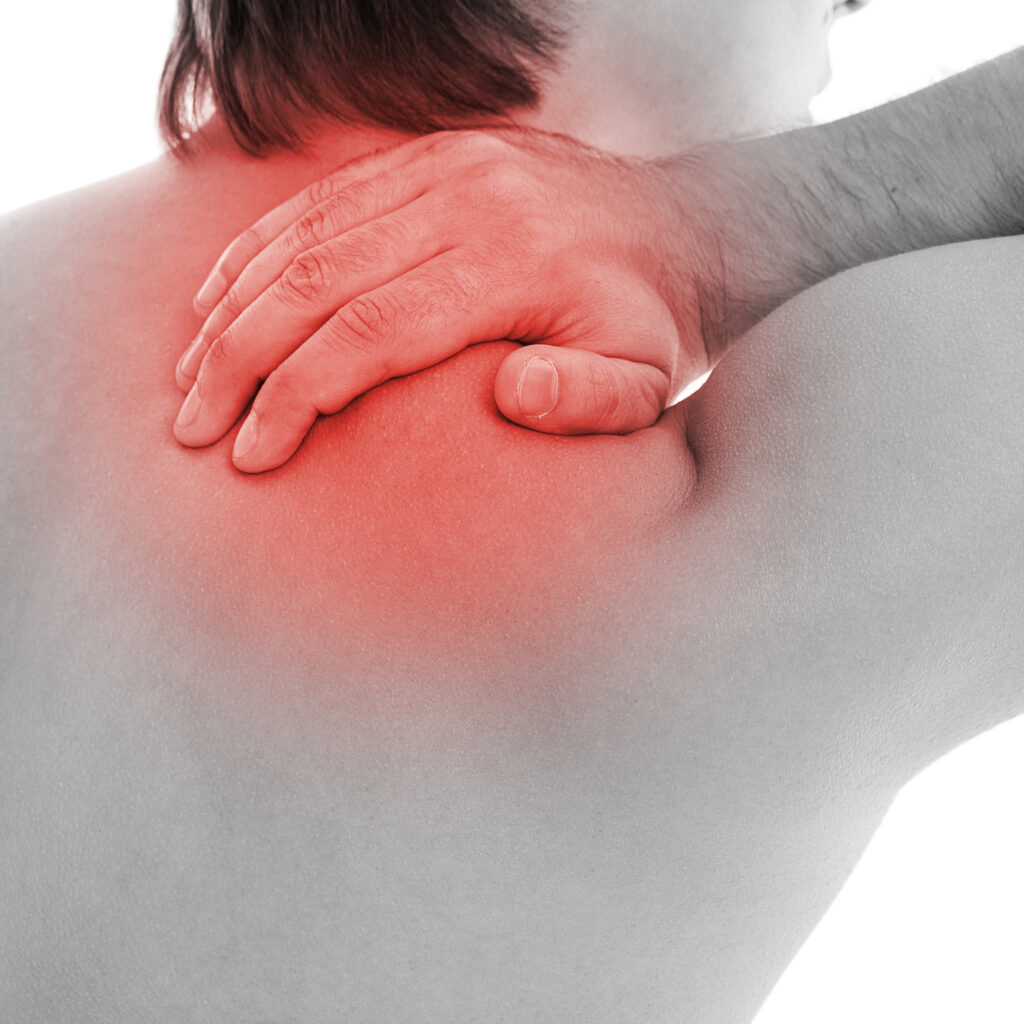If you're struggling with back pain in Phoenix, understanding how chiropractors can help is essential. They utilize a variety of techniques designed to address the root causes of your discomfort, ranging from spinal adjustments to lifestyle counseling. You might be surprised by the all-encompassing approach they take, integrating both physical and holistic strategies. As you consider your options, it's worth exploring how each method can contribute to your recovery and well-being. Let's take a closer look at these techniques and see which ones might be right for you.
Spinal Adjustments
Spinal adjustments are a key technique chiropractors use to relieve back pain. When you visit a chiropractor, they'll assess your spine's alignment and mobility. Misalignments, or subluxations, can lead to discomfort and pain, affecting your overall quality of life. By performing spinal adjustments, chiropractors aim to restore proper alignment, promoting better function and reducing pain.
During an adjustment, your chiropractor applies controlled force to specific joints in your spine. You might hear a popping sound, which is normal and indicates the release of gas bubbles within the joint. This process helps improve mobility and may alleviate nerve interference caused by misaligned vertebrae.
You may notice immediate relief or gradual improvement in your symptoms following an adjustment. Many patients report feeling more relaxed and experiencing increased range of motion. It's important to communicate openly with your chiropractor about your pain levels and any changes you feel after each session. This feedback allows them to tailor your treatment plan effectively.
Regular adjustments can also help prevent future issues by maintaining spinal health. Your chiropractor might recommend a series of visits to guarantee ideal results. They'll provide guidance on lifestyle changes and exercises that can support your spine in between appointments.
Soft Tissue Therapy
Soft tissue therapy focuses on techniques that help relax your muscles and enhance your mobility.
By targeting specific areas, you can improve flexibility and reduce tension in your body.
This approach works hand in hand with spinal adjustments to provide thorough relief from back pain.
Techniques for Muscle Relaxation
When you experience back pain, exploring various techniques for muscle relaxation can be essential to finding relief. Chiropractors often use soft tissue therapy to target muscle tension, helping to alleviate discomfort.
One effective method is massage therapy, which encourages circulation and reduces tightness in the muscles. By applying pressure to specific areas, the chiropractor helps release knots and improve blood flow, promoting healing.
Another popular technique involves myofascial release. This method focuses on the fascia, the connective tissue surrounding muscles. By gently stretching and applying pressure to the fascia, you can relieve pain and restore flexibility.
Trigger point therapy is also beneficial; it targets specific points in your muscles that are tight or painful, easing tension and improving overall muscle function.
Additionally, heat therapy can play a role in muscle relaxation. Applying heat to your back can help soothe sore muscles, increasing blood flow and reducing stiffness.
Cold therapy, on the other hand, can reduce inflammation and numb sharp pain.
Incorporating these techniques into your routine can greatly improve your back pain, allowing you to enjoy daily activities with greater ease and comfort.
Enhancing Mobility and Flexibility
Mobility and flexibility are essential for maintaining an active lifestyle, especially if you're dealing with back pain. Chiropractors often use soft tissue therapy to help improve these aspects, making it easier for you to move without discomfort.
This approach focuses on relaxing tight muscles, improving circulation, and enhancing joint function, allowing you to regain a sense of freedom in your movements.
When you visit a chiropractor, you can expect to experience:
- Targeted Stretching: Personalized stretches that target specific muscle groups, helping to increase your range of motion.
- Myofascial Release: Techniques that apply gentle sustained pressure to the connective tissue, reducing tension and promoting healing.
- Active Release Techniques: Dynamic movements combined with pressure to break down scar tissue and improve mobility.
Exercise Rehabilitation
Exercise rehabilitation plays an essential role in alleviating back pain, helping you regain strength and flexibility. When you engage in targeted exercises, you not only increase your muscle strength but also improve your overall stability, reducing the strain on your back. Chiropractors often develop personalized exercise programs tailored to your specific needs, ensuring that you work on the areas most affected by pain.
One of the key components of exercise rehabilitation is strengthening the core muscles. A strong core supports your spine and helps maintain proper posture, which can greatly lessen back pain. Your chiropractor may guide you through exercises like planks, bridges, and pelvic tilts, which focus on building core strength effectively.
Flexibility is another essential aspect of rehabilitation. Tight muscles can contribute to discomfort, so stretching exercises become important. Your chiropractor might introduce you to stretches that target the hamstrings, hip flexors, and lower back. Incorporating these stretches into your routine can help alleviate tension and enhance your range of motion.
Additionally, consistency is key. You'll want to commit to your rehabilitation exercises to see the best results. Your chiropractor will likely recommend a schedule that fits your lifestyle, making it easier for you to stick with it.
As you progress, your chiropractor may adjust your exercise regimen, adding new challenges to keep you motivated and engaged. By actively participating in your exercise rehabilitation, you can take considerable steps toward reducing your back pain and improving your quality of life.
Lifestyle Counseling
When it comes to managing your back pain, setting up an ergonomic workstation can make a significant difference.
Incorporating exercise and stretching routines into your daily life will help strengthen your back and improve flexibility.
Let's explore how these lifestyle changes can pave the way to a healthier, pain-free you.
Ergonomic Workstation Setup
Creating an ergonomic workstation is essential for enhancing comfort and productivity while reducing the risk of back pain.
When you're spending long hours at your desk, the right setup can make all the difference. Here are some key elements to evaluate for your workspace:
- Chair Height: Your knees should be at a 90-degree angle, with your feet flat on the floor. This helps maintain proper posture and reduces strain on your back.
- Monitor Position: Position your monitor at eye level, about an arm's length away. This prevents you from hunching forward or straining your neck.
- Keyboard and Mouse Placement: Keep your keyboard and mouse close enough so you can use them with your elbows at a 90-degree angle. This minimizes unnecessary reaching and helps maintain a neutral wrist position.
Exercise and Stretching Routines
A well-designed workstation can only do so much if it's not complemented by regular movement and stretching. To truly alleviate back pain, integrating exercise and stretching routines into your daily life is vital. You don't need a gym membership; simple exercises can be done at home or even in your office.
Start by setting reminders to stand up and move every hour. A quick walk or a few minutes of stretching can greatly reduce tension in your back. Incorporate stretches that focus on your hamstrings, hip flexors, and lower back. For example, try a seated forward bend to relieve tightness and improve flexibility.
Strengthening your core is also important. Exercises like planks and bridges can help support your spine and reduce discomfort. Aim for at least 30 minutes of moderate exercise most days, whether it's brisk walking, cycling, or yoga.
Nutritional Guidance
Proper nutritional guidance plays an essential role in managing and alleviating back pain. You mightn't realize it, but the foods you consume can notably impact your body's ability to heal and maintain a healthy spine.
By focusing on a balanced diet, you can reduce inflammation, support muscle strength, and promote overall wellness, which ultimately helps lessen back pain.
Here are some key points to reflect on when it comes to nutrition:
- Anti-inflammatory foods: Incorporate foods rich in omega-3 fatty acids, like salmon and walnuts, as well as fruits and vegetables that are high in antioxidants, such as berries and leafy greens. These can help reduce inflammation that may contribute to your back pain.
- Proper hydration: Staying hydrated is essential for maintaining the elasticity of your spinal discs. Aim to drink plenty of water throughout the day to keep your body well-hydrated and support overall spinal health.
- Calcium and Vitamin D: Make sure you're getting enough calcium and vitamin D, as they're critical for bone health. Think about dairy products, fortified plant-based milk, or leafy greens for calcium, while sunlight exposure and fatty fish can boost your Vitamin D levels.
Posture Correction
Good posture is essential for preventing and alleviating back pain, as it helps distribute weight evenly across your spine and reduces strain on muscles and ligaments. When you maintain proper alignment while sitting, standing, or moving, you're less likely to experience discomfort. Chiropractors focus on posture correction as a key strategy to help you improve your spinal health.
You mightn't realize how your daily habits contribute to poor posture. Slouching while sitting at your desk or hunching over your phone can lead to misalignment. A chiropractor can assess your posture and identify areas needing improvement. They'll guide you through exercises and stretches that promote better alignment and strengthen your core muscles, which play an important role in supporting your spine.
Incorporating posture correction techniques into your routine doesn't have to be complicated. Start by being conscious of your alignment throughout the day. When sitting, keep your feet flat on the ground and your back against the chair. If you're standing, distribute your weight evenly and keep your shoulders relaxed.
Your chiropractor may also recommend ergonomic adjustments to your workspace. A chair with lumbar support or a desk that allows for standing can make a significant difference.
Over time, these corrections can lead to lasting changes in your posture, helping to alleviate back pain and prevent future issues. By prioritizing posture correction, you're taking a proactive step toward better spinal health and overall well-being.
Stress Management Techniques
Managing stress effectively is essential for alleviating back pain, as tension in your muscles can lead to discomfort and misalignment. Incorporating stress management techniques into your daily routine can greatly improve your overall well-being and help ease your back pain.
Here are some methods you can try:
- Deep Breathing Exercises: Focusing on your breath can help calm your mind and relax your muscles. Take a few moments each day to practice deep inhalations and exhalations, allowing tension to melt away.
- Mindfulness Meditation: Practicing mindfulness can help you become more aware of your body and its sensations. Set aside time to sit quietly, observe your thoughts, and connect with your physical presence. This can reduce stress and promote relaxation.
- Regular Physical Activity: Engaging in regular exercise not only strengthens your muscles but also releases endorphins, which can improve your mood and reduce stress levels. Whether it's walking, yoga, or another form of exercise, find what works best for you.
Conclusion
To sum up, chiropractors in Phoenix offer a holistic approach to alleviating back pain through spinal adjustments, soft tissue therapy, and personalized exercise rehabilitation. By incorporating lifestyle counseling and nutritional guidance, they empower you to make healthier choices. Posture correction techniques and stress management strategies further enhance your overall well-being. With these all-encompassing methods, you can find relief from back pain and improve your quality of life. Don't hesitate to explore these options for a healthier, pain-free future!



